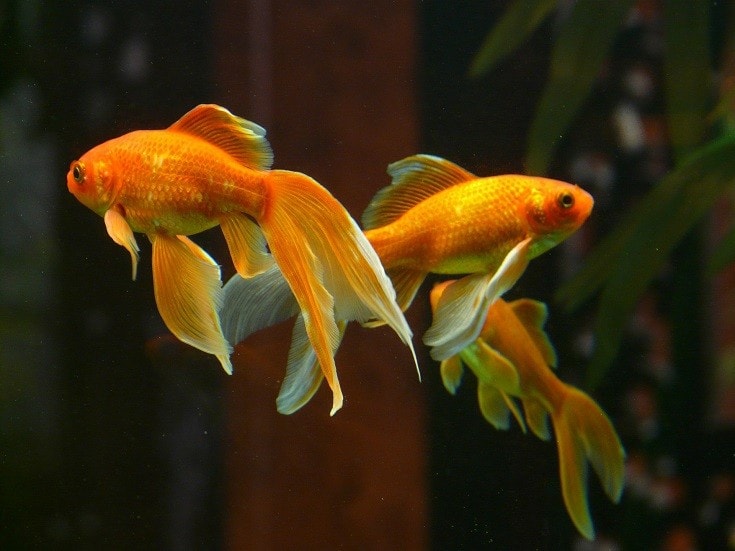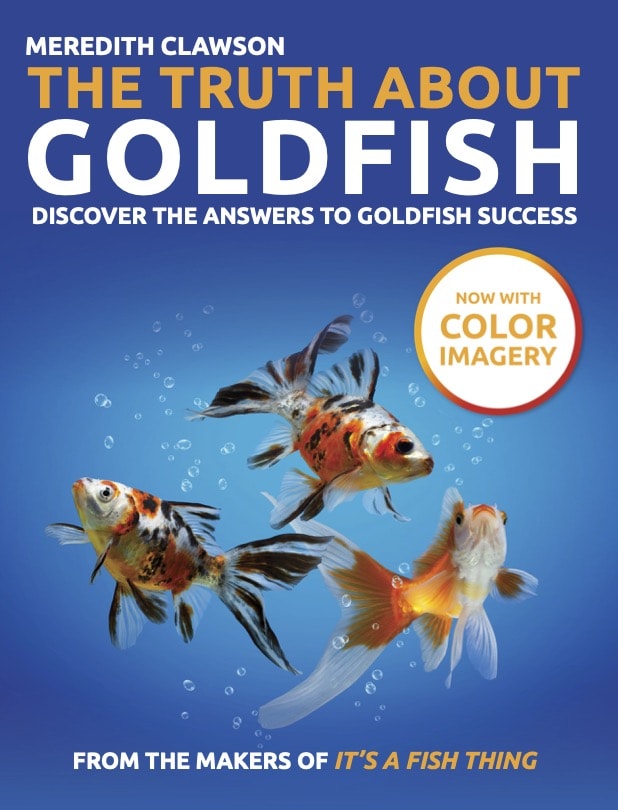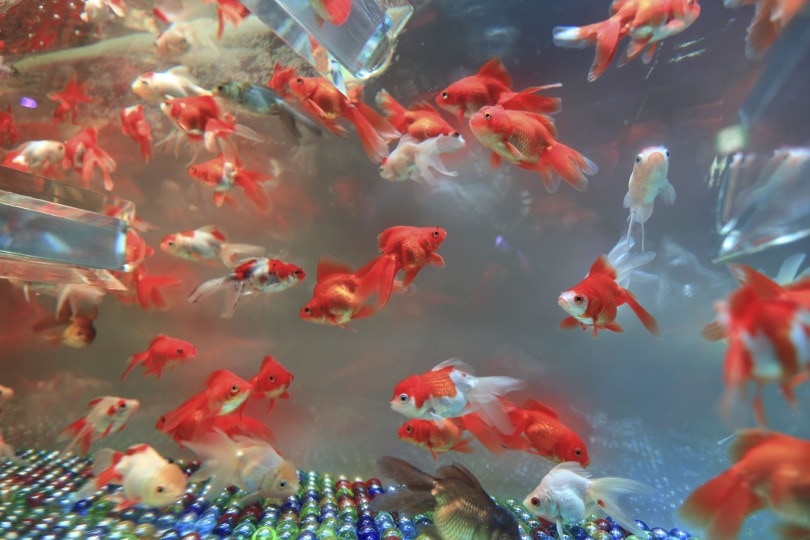Goldfish Growth Stunted: Why it Happens & What to Do About It

Goldfish have followed a similar path as rabbits and guinea pigs, going from a food source to a pet, at least for some people. Americans buy over 480 million goldfish each year, ample evidence of their popularity. While goldfish are not cuddly like puppies, we still care about our aquatic friends. So, stunted growth in goldfish is sure to raise concerns among pet owners.
Goldfish can get between 4.75-8.5 inches long, depending on the variety and living conditions. A fish that hasn’t reached its genetic size is not a healthy one. Bear in mind that the variety matters. Fancy goldfish, such as Orandas, will not get as long as typical single-finned fish.

Genetics
Genetics determines how large your goldfish will get. That in turn, depends on several other factors. The goldfish’s DNA decides its potential for growth, with other things driving whether it’ll happen and to what degree.
Living Conditions
Optimal living conditions are imperative to any pet’s health. That’s what makes your tank’s setup is so vital. First, consider the size of your aquarium. It’s a widespread myth that you should plan on 1 inch of fish per gallon. From a logical perspective, that’s too simplistic. It doesn’t take into account the social behavior of a fish, its activity level, adult size, or physiology.
Goldfish consume a large amount of oxygen and produce a great deal of waste. Erring on the conservative side with a larger tank is probably the better choice. Think of it this way: If you give your fish the space that they need with adequate filtration, you’ll have less maintenance to do. It’s a win-win.
It’s unfortunate that many pet stores and other organizations promoted the idea of keeping goldfish in bowls. Remember that they are pond dwellers in the wild. People have come around to the fact that these confined spaces are cruel, with some countries banning them outright. A tank that is too small for a goldfish will undoubtedly affect its growth.

Poor Water Quality
Goldfish have high oxygen needs. There are two ways in which it gets into your tank: either from the surface area at the top with agitation or live plants. Unfortunately, goldfish don’t play nice with the latter, making artificial ones the better choice. Adding an airstone or bubbler can improve the water quality immensely by boosting the concentration of dissolved oxygen.
If your goldfish is to grow to its genetic potential, there must be between 5-6 ppm in its tank. Less will stress your fish and lead to stunted growth. A goldfish living in poor conditions will divert its nutritional sources to staying alive instead of getting bigger. The same principle applies to any organism, including people.
If you are looking for help to get the water quality just right for your goldfish family in their aquarium, or just want to learn more about goldfish water quality (and more!), we recommend you check out the best-selling book, The Truth About Goldfish, on Amazon today.

It covers everything from water conditioners to tank maintenance, and it also gives you full, hard copy access to their essential fishkeeping medicine cabinet!
The Nitrogen Cycle
Even with a filter, you’ll still need to do regular water changes of about 20% per month. Fish waste converts to ammonia, which is toxic at high levels. Beneficial bacteria will break it down into nitrites and nitrates. Nitrites are harmful at high levels. Nitrates typically end up as plant food, but having plants in the tank is not always an option with goldfish.
Unfortunately, a build-up of these chemical compounds can stunt growth. That’s where the water changes come into play. They can help reduce the concentration to create a healthier environment for your goldfish. We recommend testing your water for ammonia, nitrites, and nitrates every week to make sure the conditions are adequate.

Hardness
You should also monitor the general and carbonate hardness of your aquarium’s water. The former refers to the concentration of magnesium and calcium. Goldfish prefer it on the higher end of the spectrum, at about 180 mm/L. Carbonate hardness measures carbonate and bicarbonate concentration. The ideal figure is 120 mg/L. You can get test kits that will check both.
You can change the water to get within the correct range using either water conditioning products or doing partial water changes. The essential thing is to make the transition gradually to avoid stressing your goldfish and contributing to stunted growth.
Nutritional Deficiencies
Goldfish aren’t much different from any organism. They need the right nutrients in the correct amounts to grow properly. Stunted growth is a symptom of many deficiencies, including vitamin C, thiamine, and niacin. Feeding your fish a commercial diet supplemented with protein sources will help ensure that it’s getting what it needs to grow. Look for products that can supply 29% protein by weight.

Treatment Options
Goldfish reach their mature size at about 1 year. If they seem on the small side, it’s time to take action. Water conditions are easy to check and are an excellent place to start. You may find that you have to tweak your maintenance schedule to home in on the ideal conditions. The key is consistency. Remember that you are recreating the fish’s native habitat. It should stay reasonably stable.
It’s essential to give your goldfish food formulated for this species. The dietary needs of aquatic organisms vary with the types of foodstuffs that they eat. Goldfish are omnivores that will consume both plants and meat. A commercial product will reflect these nutritional needs. We strongly urge you to feed only what your fish eats within a few minutes.
Excess food going to the bottom will wreak havoc on the tank’s water quality. It’ll also add to your maintenance and costs. Giving your goldfish more food isn’t a solution to stunted growth. It’s far better to provide it with the correct amount of a nutrient-dense food that reduces the risks of deficiencies that could impact growth.

Final Thoughts
We all want our pets to stay healthy and have a good quality of life. After all, they bring us so much joy. Stunted growth in your goldfish is a red flag that you shouldn’t ignore. Not only will it affect your fish’s size, but it can also cause other health issues that can shorten its lifespan. While you can’t control all the growth factors, you can provide an environment that encourages and supports your fish.
You might also be interested in:
Featured Image Credit: Pixabay



Không có nhận xét nào